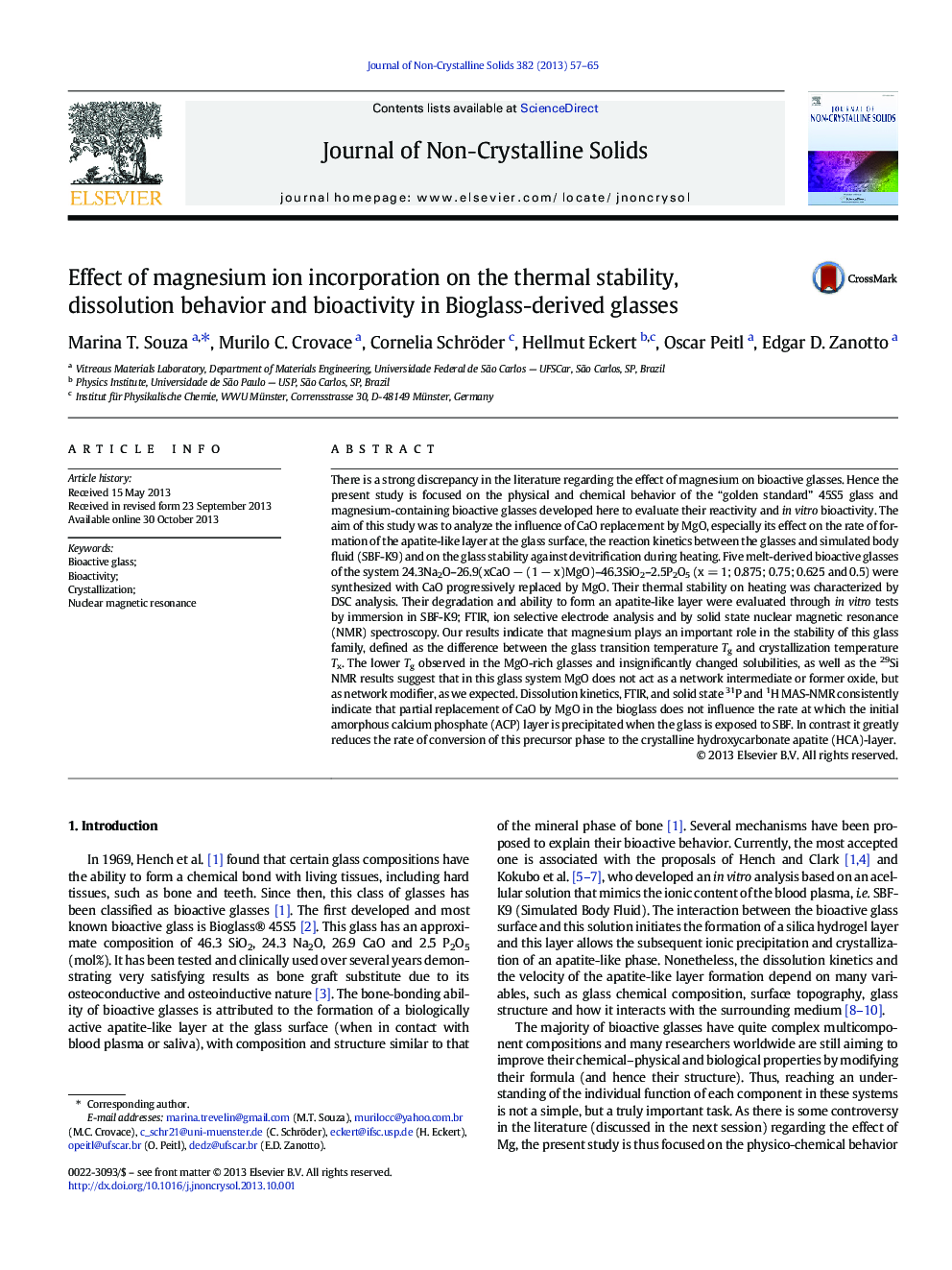| کد مقاله | کد نشریه | سال انتشار | مقاله انگلیسی | نسخه تمام متن |
|---|---|---|---|---|
| 1481100 | 1510456 | 2013 | 9 صفحه PDF | دانلود رایگان |

• Contrary to some articles, Mg does not act as a network intermediate.
• Mg is important for glass stability against crystallization and dissolution.
• Replacement of Ca by Mg does not affect the rate of ACP layer formation.
• Mg affects HCA layer formation in Bioglass®-derived glasses.
There is a strong discrepancy in the literature regarding the effect of magnesium on bioactive glasses. Hence the present study is focused on the physical and chemical behavior of the “golden standard” 45S5 glass and magnesium-containing bioactive glasses developed here to evaluate their reactivity and in vitro bioactivity. The aim of this study was to analyze the influence of CaO replacement by MgO, especially its effect on the rate of formation of the apatite-like layer at the glass surface, the reaction kinetics between the glasses and simulated body fluid (SBF-K9) and on the glass stability against devitrification during heating. Five melt-derived bioactive glasses of the system 24.3Na2O–26.9(xCaO − (1 − x)MgO)–46.3SiO2–2.5P2O5 (x = 1; 0.875; 0.75; 0.625 and 0.5) were synthesized with CaO progressively replaced by MgO. Their thermal stability on heating was characterized by DSC analysis. Their degradation and ability to form an apatite-like layer were evaluated through in vitro tests by immersion in SBF-K9; FTIR, ion selective electrode analysis and by solid state nuclear magnetic resonance (NMR) spectroscopy. Our results indicate that magnesium plays an important role in the stability of this glass family, defined as the difference between the glass transition temperature Tg and crystallization temperature Tx. The lower Tg observed in the MgO-rich glasses and insignificantly changed solubilities, as well as the 29Si NMR results suggest that in this glass system MgO does not act as a network intermediate or former oxide, but as network modifier, as we expected. Dissolution kinetics, FTIR, and solid state 31P and 1H MAS-NMR consistently indicate that partial replacement of CaO by MgO in the bioglass does not influence the rate at which the initial amorphous calcium phosphate (ACP) layer is precipitated when the glass is exposed to SBF. In contrast it greatly reduces the rate of conversion of this precursor phase to the crystalline hydroxycarbonate apatite (HCA)-layer.
Journal: Journal of Non-Crystalline Solids - Volume 382, 15 December 2013, Pages 57–65